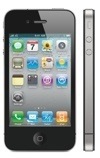According to ABI Research (http://www.abiresearch.com), smartphones made up 19% of all handsets shipped in the second quarter. That represents a 12% increase over the first quarter, and a 50% jump compared to the same quarter in 2009.
Senior analyst Michael Morgan says that these remarkable growth rates are being driven by falling (often heavily subsidized) handset prices. Cost is no longer much of an obstacle.
“One of the key remaining barriers to smartphone adoption in subsidized markets is now the cost of the data plan rather than the cost of the handset,” he says.
Ten percent would normally be considered very good quarter-over-quarter growth, Morgan notes, but in the smartphone segment that would now be considered lackluster. The battle for supremacy is now escalating at a feverish pitch.
“The market is exploding, but there are so many players and so many operating systems that the question becomes, ‘Can this market structure be sustained?’ Most observers say no: it needs to boil down to three or perhaps four key operating systems, Morgan says.
In addition, the huge numbers of smartphones now connected in the US — especially iOS and Android models — are creating network capacity concerns that are “sucking the value out” of the mobile ecosystem, he adds. So wgich vendors are faring best?
ABI Research notes that Apple shipped about 8.4 million iPhones in the second quarter, of which about three million were iPhone 4 models that only launched a couple of weeks before the end of the quarter. Third quarter results were even more impressive, posting a 68% quarter-over-quarter growth.
HTC also did very well, with shipments growing from 3.3 million to 5.3 million units the by the start of the third quarter, and its improvement continued through the third quarter. RIM recently launched its latest OS but, says Morgan, “RIM hasn’t seen the full benefit of its OS launch yet,” with quarter-over-quarter growth moving only from 10.5 to 11.2 million shipments.



